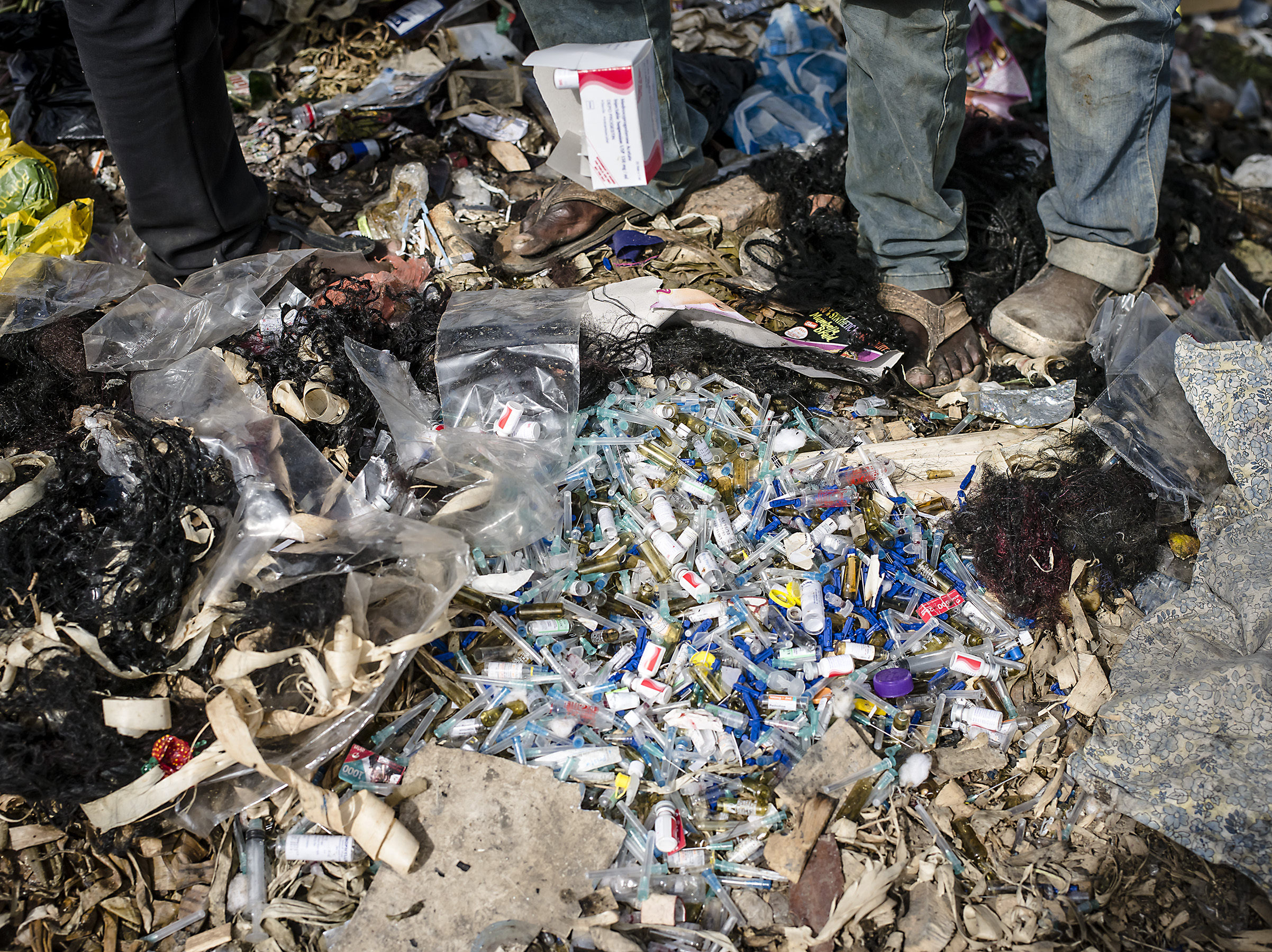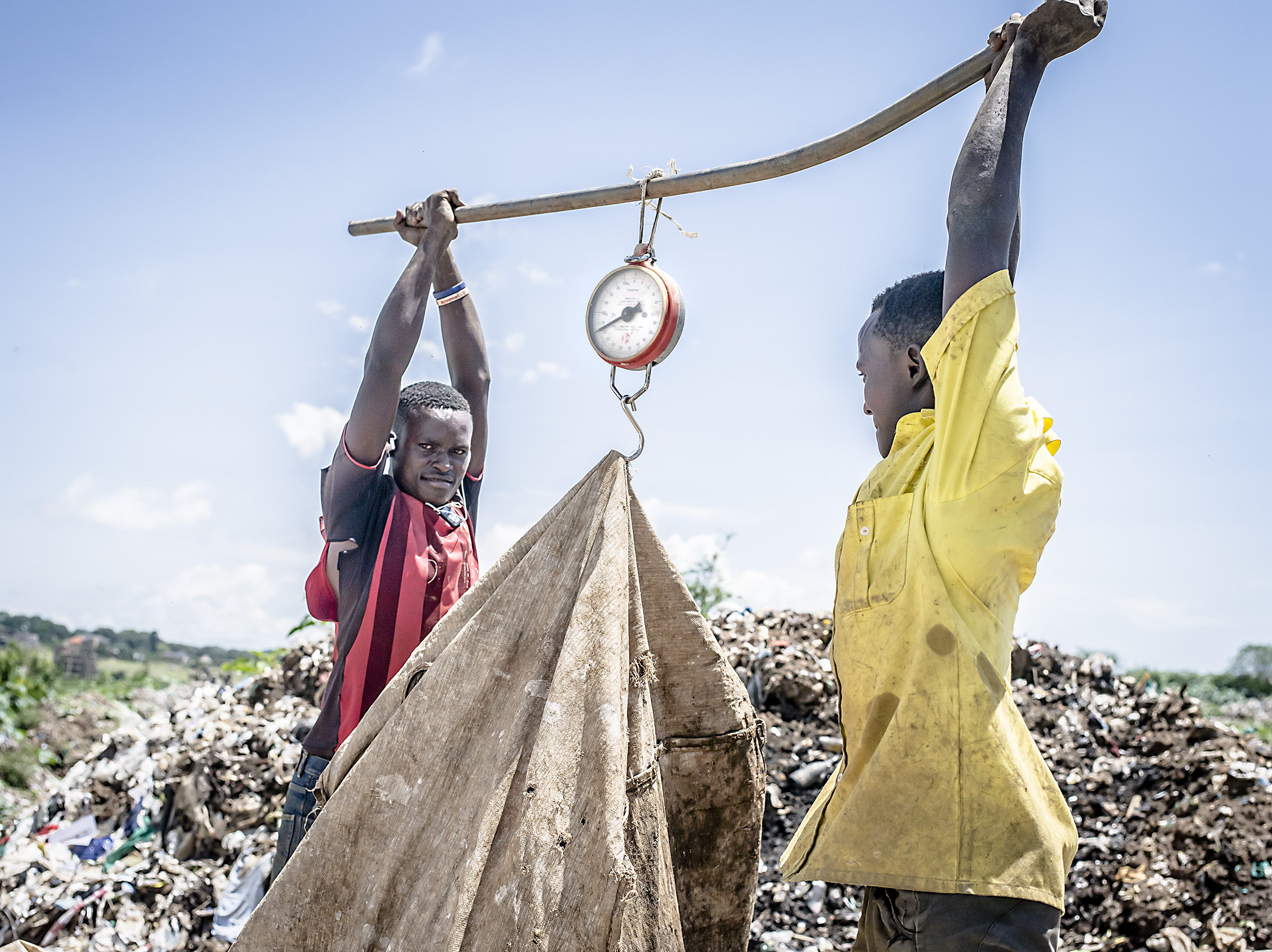Between miles of breathtaking wilderness, nature and beauty in Uganda you will find pockets of trash dumped in the same environment. Many times trash is dumped in hidden areas, but all too often local people place their garbage in public areas. This is not only done in Uganda, but in the majority of the world. I have photographed over 11 places with waste in Uganda and what happens in areas of Africa, happens in the Americas, Asia and beyond. This report is not necessarily about Uganda, it’s about our Earth. You can reference my other work from all over the world and it’s the same problem; how can waste be handled like it is in developed nations? Not only because more devoted countries in this interest and field have been successful at it, but because the world plays a role in it’s existing problem. We make and transport non-biodegradable materials to all sections of the world that can not handle their waste intake properly. Yet it does not concern richer societies because they have the means of recycling their own waste to a certain capacity and send the rest out to those other countries that can’t handle the waste. This is why waste is a global responsibility. We must take interest to help not only ourselves, but our neighbors as well. Especially when so much profit is being made from the products sold, that money could be invested back into the better life circularity of materials.
KAMPALA DUMPSITE
Two women rip off labels from plastic bottles in the Kampala dumpsite.
When I saw the women scraping off each label of every bottle that came into the Kampala dumpsite in Uganda, I was reminded about the thousands of bottles that pass through there each day and how each bottle is hand picked and the label is manually ripped off. There is something so commendable about those who classify waste. That is why I photograph informal recyclers and not the waste-makers. Waste-makers are every single one of us in the entire world, but informal recyclers are a much smaller group, around 60 million, who correct what they can on the later lifecycle of waste. Many informal recyclers are shameful of what they do. I’d rather place a spotlight on them and bring more awareness to the public so people know who to feel grateful for in the harsh service of recycling. But it doesn’t end with gratitude for someone else's work, now we need to come together globally for a healthier solution.
Man sorting plastics at the Kampala dumpsite.
Homes run adjacent to Kampala dumpsite.
History has left us impressive fossils, the pyramids, unexplainable ancient artifacts/cities, priceless art and so much more. These are all things constructed with natural materials; stones, natural dyes, rocks, clay, etc. But what are the fossils of ourselves now? Is it plastic straws, syringes, medical waste, cell phones with no data, digital archives that cannot be seen, mountains and many miles of synthetic junk? After humanity, there will be no digital footprint. We might only have synthetic materials and a carbon footprint left over.
MBARARA (Informal dumpsite on high hill)
Local children wave hello from a dumpsite where they are looking for materials to sell. Mbarara.
A man weighs bags that he will buy from the boy who collected them in the Mbarara dumpsite.
I made a friend who is a passionate waste management enthusiast named Taremwa Sam Rwabwehare. He created UWMAC (Uganda Waste Management & Administration Confederation). I visited him in Uganda for two weeks to investigate what Uganda was doing about its waste. During my time with him, I noticed Sam as a person who was genuinely upset and concerned with preserving the nature and its pristine beauty in his country. His sisters also work in a similar field; the younger works in fuel effciency projects for the Ministry of Energy and the older sister is a Women Welfare, HIV Control and Prevention Expert for UN Women. Sam took me to his home. It was a far and tucked away paradise in a poor area in the hills. Nature there was proudly green with picture-postcard mountains for their backdrop. I could quickly see why they all had a passion to preserve such beauty.
His mother introduced me to a women's group that she started who gather every week to plan and discuss how they can work together to help their children and community. They create budgets and a plan to put each of their children into schools and how to repair or build towards their livelihoods and local community in the most basic ways. They do this through their own hard work and the money they earn. then later share with one another to complete the latest project. The result for her particular family is her five children all graduating in a field they love, their house has small solar paneling for energy, they were able to upgrade their home with basic construction and they have a large farm for their own vegetation. You can clearly see the results of their planning through the success of their children and their home which is a little more developed than many others in the area.
MBARARA (Informal dumpsite in market area)
Taremwa Sam Rwabwehare holds hands with an informal recycler as they lead one another through the trash to talk about the worker's life, his work and the area. Mbarara.
Group of workers from Mbarara. Some recycle trash and others recycle tires into sandals.
BUSHENYI ISHAKA
Trash that was thrown up in the hills. Bushenyi Ishaka.
People from the local town of Bushenyi Ishaka.
MASAKA
A woman puts her baby to rest after breast feeding in Masaka dumpsite.
Taremwa Sam Rwabwehare interviews and consoles a crying woman in the Masaka dumpsite.
Sam’s intention with his work is to expose the way waste is really being handled in Uganda. Not in order to exploit or hurt anyone’s intention in the matter, but to have an open discussion on what is really happening. For example, many places that are more organized in their trash collection all call their facilities landfills. But we clearly see that what is there has no lining and the trash seeps into the ground even if they perform efforts to capture the leachate. So what we really are talking about is a dumpsite and at most a managed or controlled dumpsite. Sam confronts such issues because we will not succeed if we continue living in what is not really happening. Of course, it is realized that a lack of funding or maybe even corruption may play a part in the expansion and success of waste management for a circular form in Uganda. But this is also true everywhere in the world. Therefore, the mission is not just global and environmental, but it is political as well. Sam is interested in creating a roadmap of Uganda, eventually East Africa and possibly one day all of Africa; so that people can have a reference and a better understanding of how waste can improve through real solid cases with other projects that has had repeated followups. Saying that; building bridges between these roads on this map will not be easy, is an understatement, but I could see Sam’s passion and dedication for the cause with his organization UWMAC.
NKUMBA DUMPSITE IN BUKOLWA
JINJA
Woman who runs and contracts the Jinja dumpsite.
Woman and child working in the Jinja dumpsite.
KABWOHE
KATIKOLO
Workers form Katikolo composting plant.
KATWE KABATORO
The gorgeous land of Katwe Kabatoro.
(Top right image) Though this is not a very interesting image, it says a lot. This is a water cage in Katwe Kabatoro. There had been a problem for people who fetch water at the lake, because crocodiles would snatch them and many people die this way. Therefore, a cage was created so the person could enter the water safely as the cage would protect them. Here you can see the water has become drier and receded during the wet season. Local people say they can visually see less snow on the caps of the mountains in the distance. This snow collects in the wet season and melts in the summer season. It creates fresh water for 20 rivers including the world's largest river (the Nile River) that starts in Uganda and ends in Egypt. However, the climate has been hotter and the mountains are producing less and less snow. Therefore, the lake is also drying up and it is producing much less fish. People believe this is another example of climate change.
NJERU
People sorting through the waste in Njeru.
I end the photos with this face because this man is a farmer who receives the sifted and treated soil from the composting and dumpsites to grow gardens. He is one of the completions of circularity for waste besides recycling material; gardening and starting new life cycle.
I would like to thank my partner in environmental justice for this project, Taremwa Sam Rwabwehare, as well as the openness of the environmental agencies, police, contractors at dumpsites, informal recyclers, mayor's offices and other government officials of Uganda for their time and trust in working with us. Below are images of those people who helped to make this project possible.
The Uganda Waste Report is the kickstart to a larger roadmap being created by UWMAC (Uganda Waste Management & Administration Confederation) that will act as a guide for Ugandans to better understand their waste management situation and how it can be improved. It will be a model to expand on a larger scale throughout East Africa. Learn more about UWMAC.
~ In Loving Memory of Howard E. Bouldry ~
-Timothy Bouldry





































































